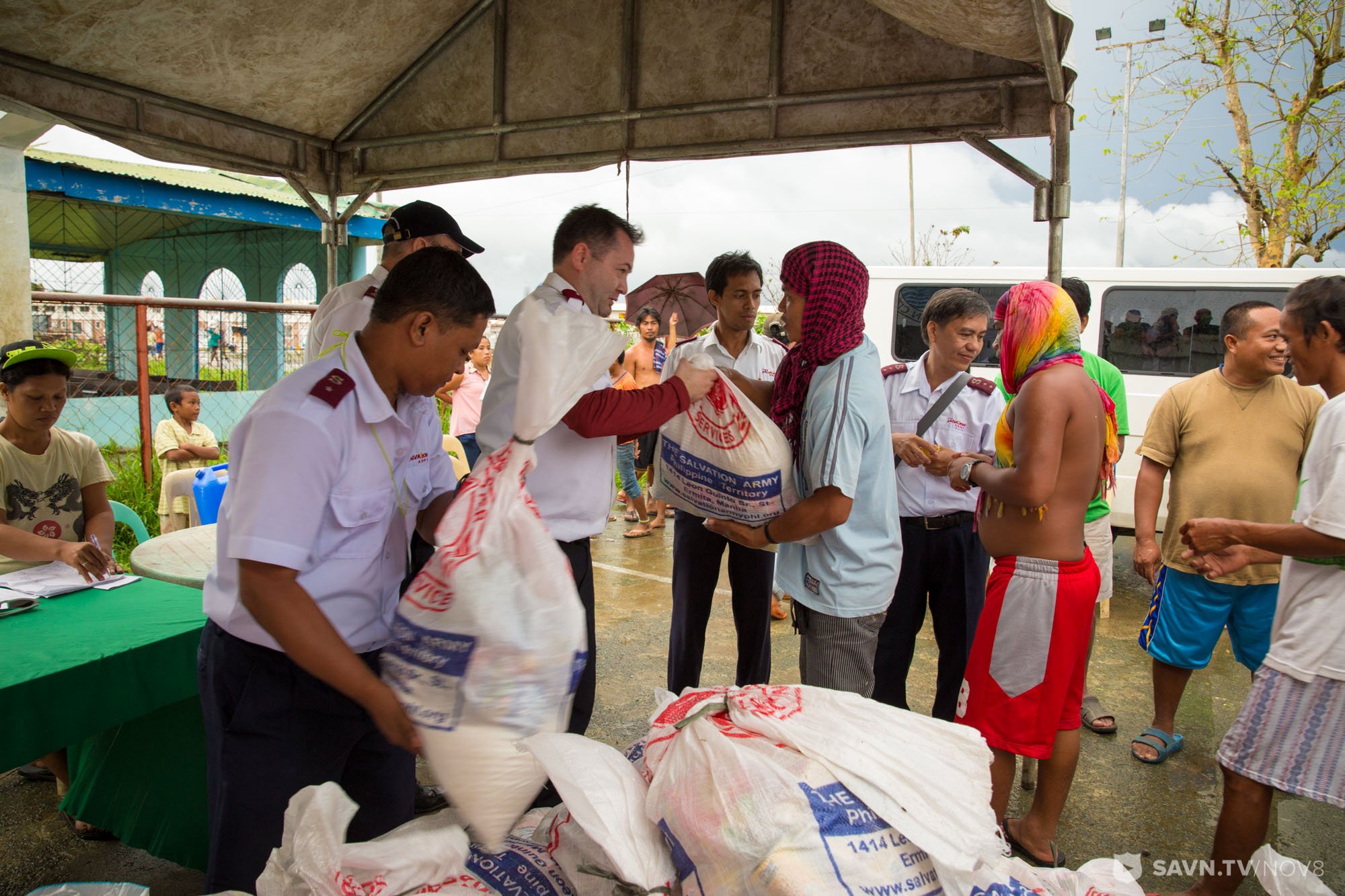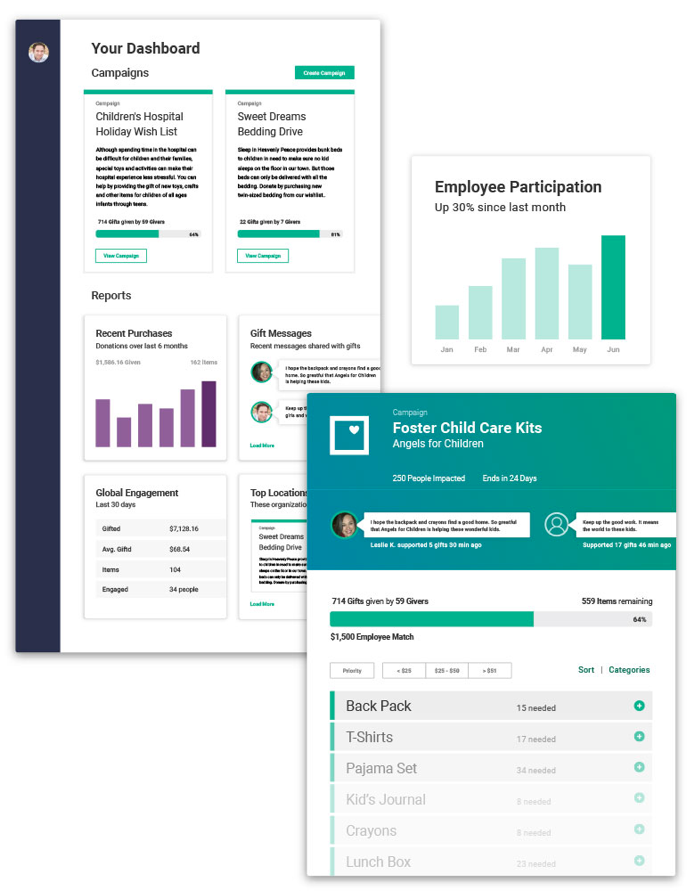Good news! You are a happy RightGift customer who has successfully helped one or more of your favorite causes through RightGift Wish Lists. Donors love the opportunity to give the exact supplies needed to carry out charitable missions.
Then the bad news comes. Disaster strikes. A hurricane hits the southeastern United States. Or a tornado ravages a midwest town. Perhaps worse, an earthquake triggers a tsunami in the South Pacific, wreaking havoc in a part of the world we often describe as “third world” … which really means they are not nearly as prepared to deal with a crisis as we are in the U.S.
Back to good news. Your donors and/or employees want to help. But how? What do you do?
More good news. Because you already have an active RightGift account, you are just minutes away from taking action. This guide will show you how. Let’s go!
1. Decide Who You Want to Help
First, let’s make sure the purpose is crystal clear. Who needs the help? This sounds like an obvious point, right? Well, unfortunately, even the biggest disaster response charities can screw this up.
Fundraising for disaster response STARTS by telling donors who needs the help. Where was the disaster? Who was impacted? How bad is the situation? Your RightGift wish list site must be clear about this in your messaging.
Here’s an important reminder. In response to the 2010 Haitian earthquake, the American Red Cross - and we are BIG fans of the Red Cross! - raised way more money than the need demanded. In fact, the Red Cross raised over half a billion dollars. The problem was that they didn’t know when to turn off the fundraising, and they did not tell donors that excess funds would be used for other disasters. NPR covered the story. The backlash from donors was significant. Donors felt that the Red Cross had broken their trust. Damage repair took a long time.
So the lesson is clear: an organization calling for people to support a disaster relief campaign will want to create individual RightGift wish lists for each event they are responding to. Messages must be specific to each need.
In a workplace giving context, companies have the opportunity to pick and choose from among many worthy charities to support. Even better, a company could support multiple organizations by creating a wish list for each recipient charity. Perhaps the charities in question have different needs. Great - we can customize each wish list to those needs. Most importantly, though, be specific about who you want to help.
2. Now Decide What Help To Provide
“What” gets to the heart of the need. “Disaster response” is a big topic. Lots of charities help in lots of different ways … depending on what specific needs they are responding to.
Some charities mobilize right away, like the Red Cross or Salvation Army. When first responders are on the scene of a tornado strike, as an example, don’t be surprised to see Red Cross workers right behind them. Relief efforts begin immediately, with clean water, food, temporary shelter, etc.

Other orgs are in the business of recovery. A family may have lost everything in a home destroyed by a hurricane. That family may have a place to live while insurance deals with the replacement of the home, but they have nothing with which to carry on their lives - no clothing, no food, no books or toys for kids. Maybe they even lost their means of transportation and computers to do school work.
TIP: If you’d like to learn more about how volunteers, nonprofits and government come together to address disaster response across the country, here is a great place to start.
Response. Recovery. Oh, and one more - let’s not forget Readiness. Even in the midst of a disaster response, there are organizations already thinking about how a community can be better prepared next time.
So, back to our earlier point about being clear with donors. To make it really easy and compelling for people to give, remember to focus on “what” goes into your RightGift wish list. What is the need you are addressing? If you represent a charity, which part of the disaster response scale are your addressing? Do you need multiple wish lists?
For example:
- For disaster response, the wish list might include: bottled water, first aid supplies, blankets, personal hygiene kits, non-perishable foods, pet supplies (don’t forget about the pets!), or even gift cards to Target or Walmart.
- For disaster recovery, the wish list could include: longer term sustainable items such as clothing, furnishings for the home, a laptop computer for kids to do schoolwork.
- And for disaster readiness, the wish list might be designed as a “kit” that people need to have in their homes. The federal government even offers guidance for good kit building. Donors purchase one of each item, and the kit is sent to a community-based organization that stands ready to respond to the next disaster.
If you represent a company running a workplace giving program, talk to the charity(ies) that you want to support. Ask them what the needs are, and how you can craft a wish list that will be exactly what they need.
TIP: Here’s a great employee engagement activity. Organize a volunteer project to assemble and deliver disaster readiness kits to a local organization that will distribute them. Use RightGift to obtain the supplies, have them delivered to your office in advance.
3. Create a New Wish List
“But we’ve already got a wish list!” you may insist. “Isn’t it better to just add some disaster relief stuff to an existing list and send out an email?” The answer to that question is definitely “no”. Here’s why.
Every fundraising campaign benefits from being focused on a specific group of people that you want to help. In fact, don’t think of your task as “fundraising”; think of it as “people-helping”.
So, the more focused you are, the better. Here’s a great example from a real RightGift customer:
Ferguson, a national plumbing supply company with offices all over the country, began using RightGift to support back-to-school drives. They built a wish list for each community of employees who wanted to give. Each community chooses one or more local schools to support, and employees give locally.
Then Hurricane Dorian hit. Ferguson created a new wish list and invited employees from all of their 1,400 locations to participate. Hurricane response was launched in less than a day.
Regardless of how you have used RightGift in the past, when disaster strikes, you have a new opportunity to respond and help. Don’t clutter up a back-to-school drive wish list with disaster relief supplies. Create that new list (or lists!) and help your employees know exactly who they will help and how.
TIP: Fundraising isn’t just about money - Fundraising is about people helping people.
And, back to Step 2 above, everyone benefits from a wish list that is clear, specific, and not too long. Think of the wish list as telling the story of the need.
4. You Need a Quick Campaign Plan
Don’t stop reading now just because we wrote the work “plan” …we are almost done! And don’t worry - we don’t want you to get bogged down. After all, time is of the essence. You - and your team, assuming you are not alone on this - are responding to a disaster.
Still, there are a few things you need to know.
- Who is your audience?
- How will you reach them?
- How frequently will you communicate?
If you are a company workplace campaign admin, your audience may be a moot point - it’s your employees. But you may want to include supplies or business partners. If you are a charity, you have donor lists, lapsed donors, and prospect lists that you can target. And don’t forget your social media audience.
On the matter of how you reach them, you have several options. Digital marketing software, if you are a nonprofit. Standard email systems. Social media channels also work. Post something to your website and/or intranet. Use a Slack channel.
The frequency of the communications also matters. One email invitation isn’t much of an effort, is it? But emailing twice a day can irritate a lot of potential donors. Give some thought to updates every few days.
Built into the question of frequency are two other important communication points: start date and completion date. You need them. Especially the latter. Nothing helps people follow through on things they intend to do like a deadline!
And finally, RightGit has a few campaign management tools built in, including a report dashboard, campaign tracker, message feeds. Use them - they will help make your life easier!

TIP: Be sure to thank everyone when your campaign wraps. You’d be surprised to learn how many organizations and fundraisers forget to say “Thank you”. ALL of your donors, employees, constituents deserve to be appreciated … even those who did not participate this time.
By the way, if you’ve read some of our other Best Practice Guides, you’ve no doubt noticed how we talk a lot about setting goals for a gifts-in-kind fundraising campaign. So why haven’t we mentioned it here?
Because of the nature of the ask. People will be generous when responding to the most urgent needs of others. It’s in our nature. You don’t need to set a big goal to ensure success. Clear and compelling messaging will be enough.
5. Go Time!
With your wish list built, dates set, and communication plan in hand, hit the “Go!” button. Be sure to follow up on your communication updates and progress reports. Give people multiple opportunities to participate … to help people!
Oh, and before we forget, good luck!
About RightGift
We hope you have found “Responding to Disaster” to be a helpful Best Practices Guide.
RightGift is a B-corporation headquartered in Austin, TX. We have hundreds of customers, both nonprofits and companies. Our one-of-a-kind gifts-in-kind software is available to customers for free, and we do not mark up item prices from our retail partners.
And one last thing - let us know if we can help!
